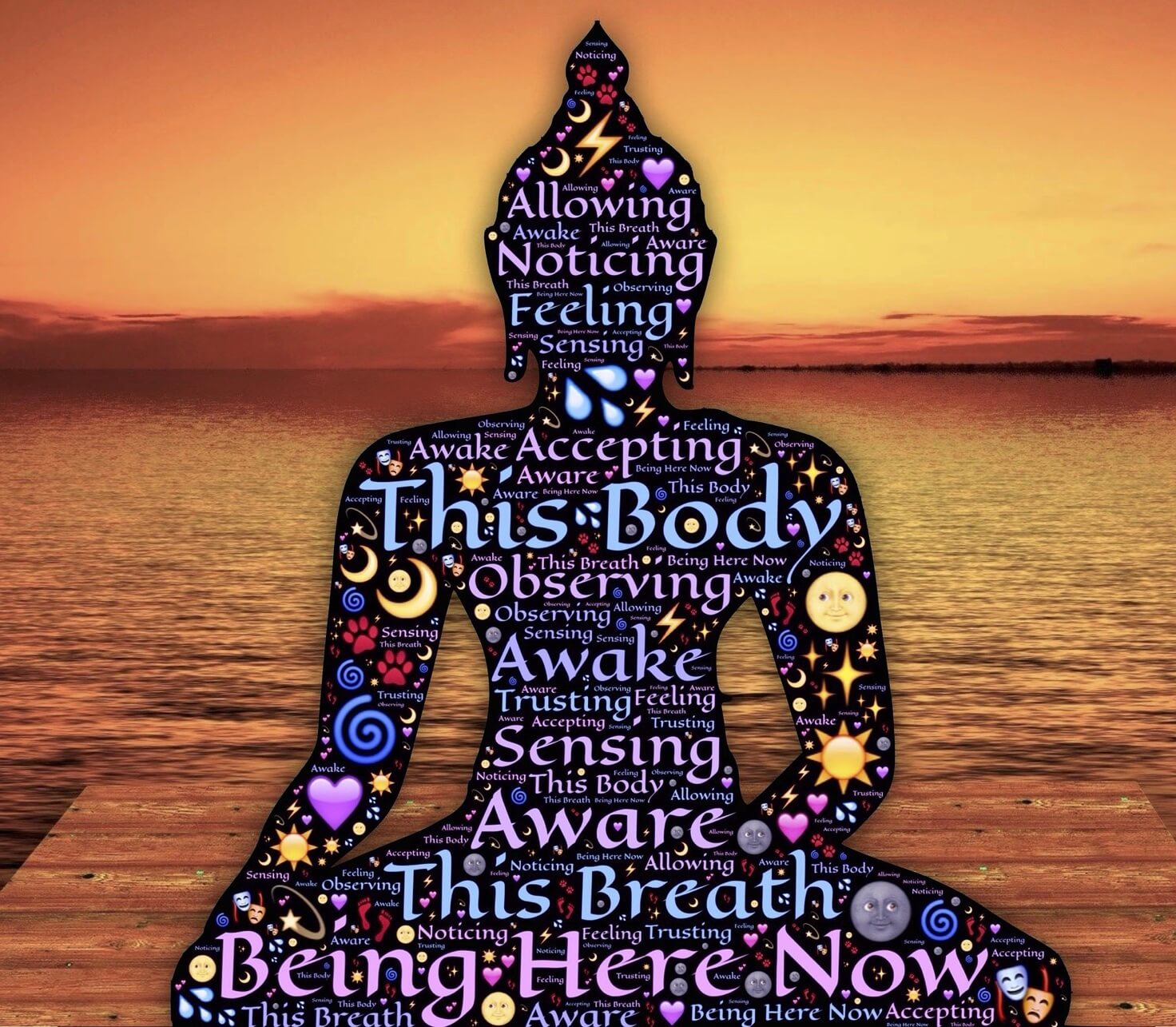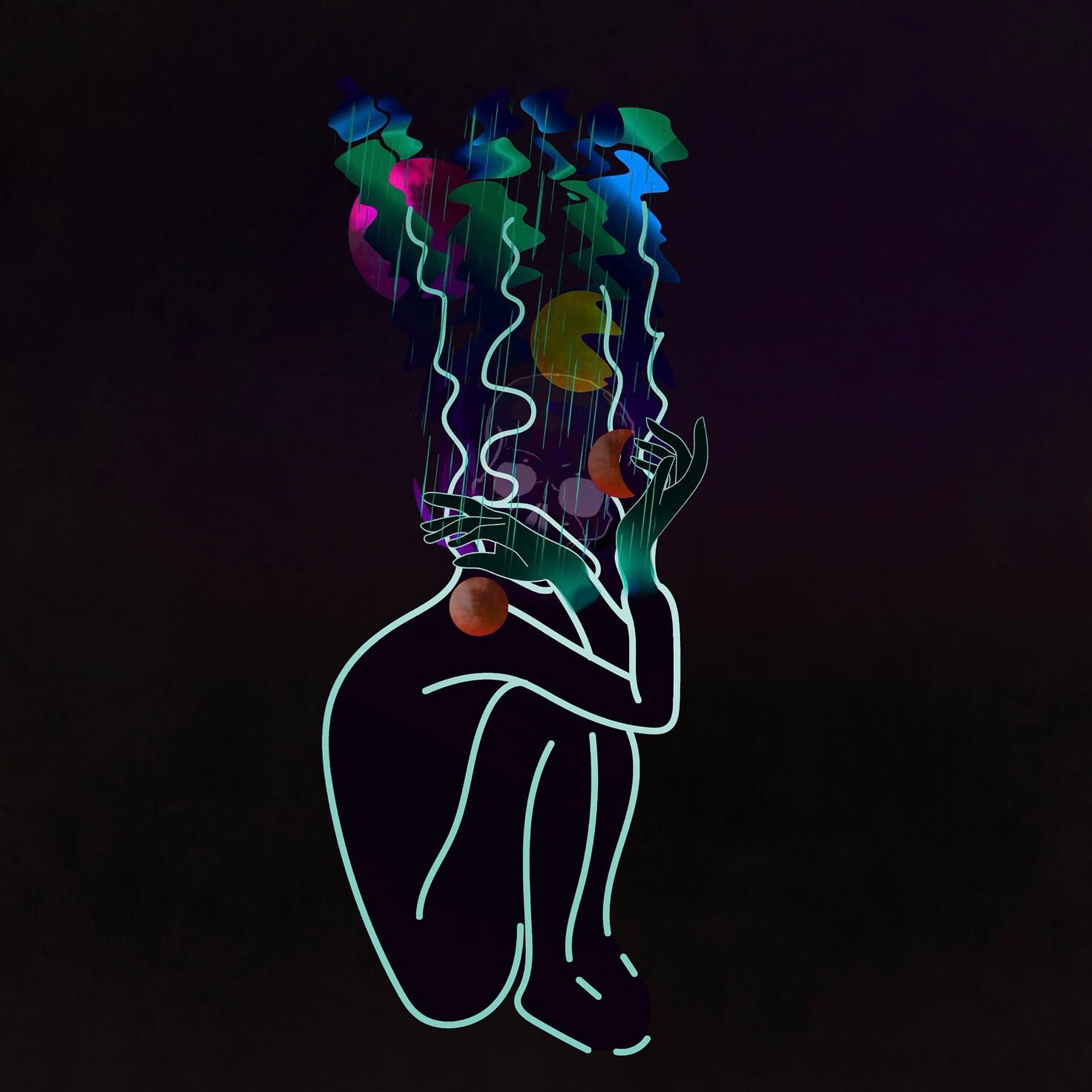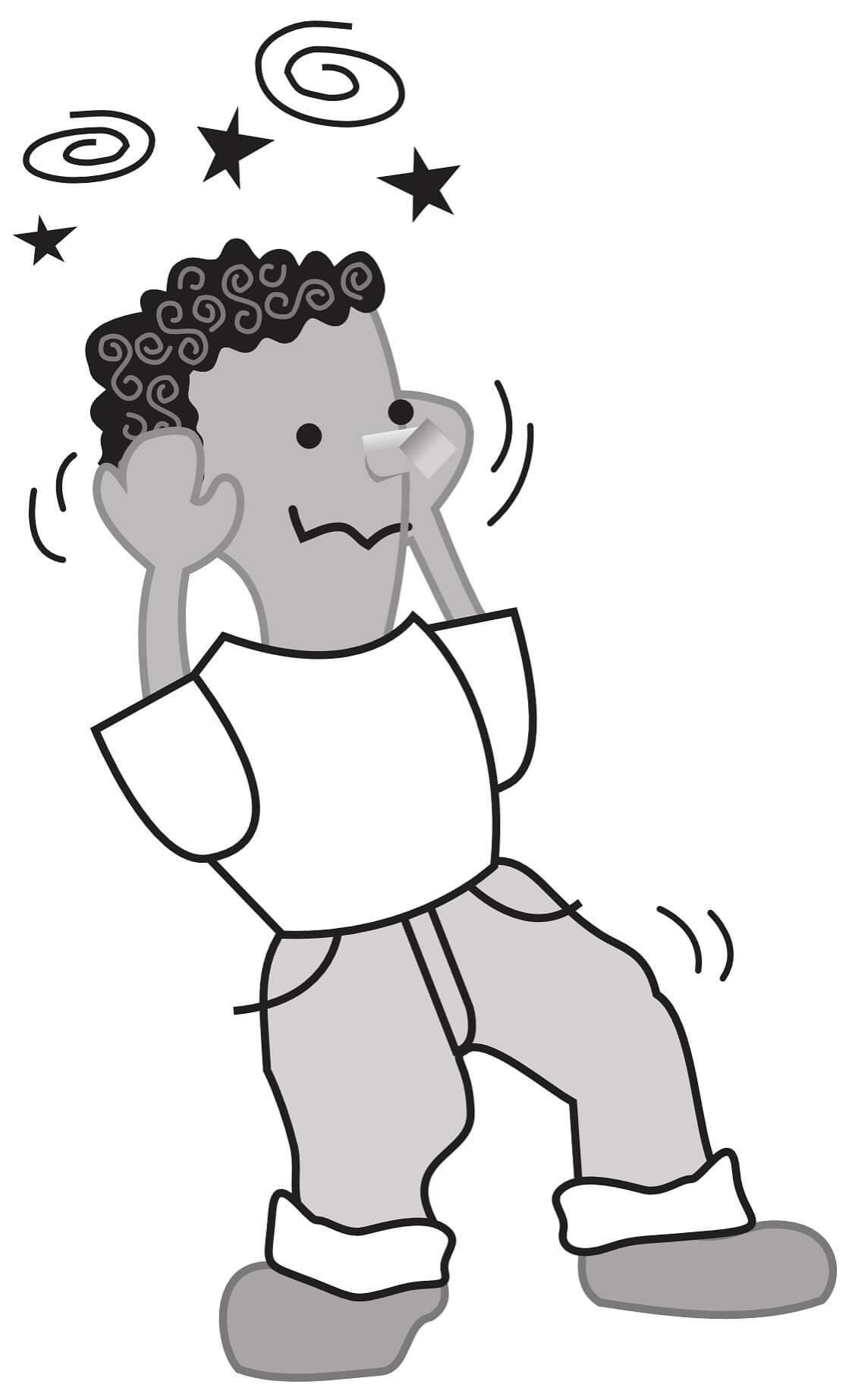What is proprioception and why is it important?
The other name you may know for proprioception is Kinesthesia. There is a slight difference between the two. Proprioception is the body’s ability to sense where it is in relation to its environment, how it moves and acts. Kinesthesia is more about the body being able to sense the weight, extent and direction of movement (1). This is the reason most of us can walk around freely, exercise without symptoms or struggle and our bodies function with fluidity and structure as we expect them to. I am using the word “most” rather loosely here because what I am learning about poor proprioception and the impact on the functioning of our body as a whole unit has me feeling we are missing something vital in the research for many health conditions.
Some examples of good proprioception include being able to walk well, run and kick a ball without having to watch your feet, being able to touch your nose with your eyes closed. The biggest obvious thing that negatively affects proprioception is alcohol. Haven’t we all seen the drunk staggering home? Have we experienced being drunk? Some of us who suffer endless yeast overgrowth or mould know this patten without ever taking a drink. It isn’t new, though for some reason it isn’t mainstream either.
The body is able to communicate in this way and in a body wide sense due to the sensory receptors on neurons (nerve endings) providing instruction to the muscles of the body. When this communication system breaks down and or all systems of the body can be subject to under-functioning. The degree of under-function will determine the level of sickness. Genetic predisposition will set the scene for certain systems to be more at risk although the environment we live in and produce (due to our conditioning, habits and beliefs) will determine if our genes are going to express in a negative way. In effect the genes set the scene and the environment pulls the trigger.
Signs and symptoms
Medical conditions or injuries that have affected muscles or nerves and / or the brain can also cause long-term or permanent proprioception impairment. These include
- Brain injury
- Autism spectrum condition (2)
- Parkinson’s disease (3)
- Peripheral neuropathy (4)
- Diabetes (5)
- Cerebrovascular accident / Stroke (6)
- Multiple Sclerosis (7)
- Arthritis (8)
- Huntington’s disease (9)
- ALS (Amyotrophic lateral sclerosis) or Lou Gehrig’s disease (10)
- Herniated disc (11)
- Joint injuries such as ankle or knee sprain (12)
- Joint replacement surgery such as hip or knee replacement (13)
- Ehler Danlos (14)
What does a consultant ophthalmologist see?
Dr. Orlando Alves da Silva is a consultant ophthalmologist, surgeon and Professor of Ocular Motricity and Proprioception. He has treated nearly 50,000 patients within whom he sees a large degree of what he calls postural deficiency syndrome or PDS.
Dr Silva sees PDS as a common but unknown disorder he treats with prism lenses (15). da Silva knows that improving visual perception this way can help a person stand in upright posture which in turn will help proprioception. So these are some further symptoms he sees:
- Ophthalmic;
- Egocentric spacial location (spatial orientation based on own point of view as opposed to allocentric where we remember environmental cues)
- Locating the body in space;
- Balance;
- Cardiovascular;
- Cognitive;
- Fatigue CFS/ME;
- Gastrointestinal;
- Hearing, taste, smell and touch;
- Pain;
- Paresthesias (burning or prickling of the feet, hands or any other part of the body)
- Psychological and psychiatric;
- Stomatognathic (teeth, jaws and associated soft tissue) such as maxillofacial
What do the auditory specialists see?
Danna & Velay (20) studied deafferented (those deprived of sensory input due to severing of sensory neurons or axons) subjects. They assessed the learning ability of these individuals both with and without the use of sonification (the translation of movement variables into synthetic sounds to make them audible). When given four new characters to learn the characters learned with the aid of sonification were reproduced more fluently and much more quickly than those without sonification. Furthermore the deafferented subjects were only able to learn when trained with sonification.
Interestingly we also know that when one sensory system is completely off-line, lets say vision for example, another system will compensate such as tactile. The consequences of proprioceptive loss to the musculoskeletal system; the natural process is for the visual system to compensate. This may account for people like Stephen Wiltshire who can draw a building with every detail intact from a single viewing of that building. Some researchers see this as a form of photographic memory. However not all with proprioception difficulties have this visual ability as we have seen with Dr Silva’s work.

What about other senses?
Your brain needs to rely on all 5 senses of sight, sound, tase, smell or touch, to make sense of our experience of the world. Our senses have to detect (such as seeing or hearing). A signal is the sent to our brain enabling you to describe colours, shapes and sounds of the experience. The signal is then routed to a specific sensory centre so you can make sense of your experience. An example may be recognising a piece of music by its composer or singer, or recognising a traffic sign by its colour, shape and the ice or word you can see on the sign.
This can be incredibly confusing when all the wiring in the brain is crossed. This is why autism is seen as a sensory processing disorder by some. I don’t believe this is purely the uniqueness of autism. I believe it crossed boundaries into many complex conditions. I believe it does this through the lens of adverse childhood events (21) or through repeated or persistent triggering of traumatic events many of us are unaware of because they occurred before the age of 7yrs. This covers all the trauma survival styles Heller discusses wonderfully (22).
Some of us have the experience of synesthesia, phenomena of sensory crossover. This is when the brain reroutes certain sensory data so we may taste colours or feel sounds. I certainly feel sounds. I also believe this is why music sells, for many of us music literally feeds our soul. Whether we play an instrument or not, whether we are able to sing or not, music is healing to those of us who feel it. Synesthesia can also be induced with the use of psychedelics, not that I would advocate their use at all.
What is Stanley Rosenberg seeing?
Stanley Rosenberg (trained by Porges) questions whether ASD can be understood from the lens of an autonomic nervous system disorder. The clients he sees are often in a state of fight or flight or dorsal vagal withdrawal which we know as shutdown or freeze. Sometimes the children can flit from one to the other for no obvious reason. Behaviour is both unpredictable and inappropriate for the situation. Stanley believes optimising the function of the vagus nerve to bring the child into a state of social engagement may bring about positive behavioural changes. Stanley notes some have a physical issue as a result of organ dysfunction. Sadly most treatments for autism tend to be behavioural without a full understanding of the physiological manifestations from the lens of Porges polyvagal theory.
It is difficult to ask someone with autism or connection trauma survival style how their physiology is changing or even how they feel. They were born sick so these children and adults have no barometer of how it feels to be well. They do not realise they have abnormal physiological symptoms. This makes it very difficult to help them change as a tiny change in their biochemistry can be alarming to them so even the most positive shift in biochemistry can cause the sympathetic nervous system to go onto high alert. If they are able to communicate their discomfort this it is not something that is generally picked up on tests so the person begins to feel its all in their head. That can have a catastrophic effect on the psyche / sense of self.
Porges identified consistent difficulties with hearing that he isolated to cranial nerves V and VII rather than VIII. This means instead of being deaf (CNVIII) the person is unable to filter out background noise (CNV & VII). If we cannot hear we cannot learn to speak. The more severe on the spectrum lack speech and yet reducing the stress response with targeted nutrients can improve this significantly. Others lose speech after a long period with spoken and receptive language. Cranial nerve VII innervates the strapedius muscle which helps reduce the volume of sounds above and below the frequency of the female voice in the middle ear. This helps the child to focus on the mothers voice. It also controls the muscles of the face which of course express emotions. This means those who are neurotypical see the pan-face of autism as a lack of empathy. Most of my clients with ASD are too empathic. They absorb all the energies of the room so they have a high level of intuition. They can tell how others feel even when the person says they are ok, such as when trying to hide anger or frustration. This is confusing and distressing for us. Porges has designed the Listening project protocol to perform research on hearing in autism (23).
Some of us become extremely skilled at reading body language and behaviour. However this may be at the expense of eye contact so we can become the victim of manipulation and abuse. The great news is that Stanley has found hearing and social skills can be improved by releasing tension at the base of the skull / neck allowing increased blood flow through to the brainstem where the cranial nerves V and VII originate. Stanley’s basic exercise and neuro-fascial release with biomechanics cranial techniques have been seen to be supportive in declassification of the autism label in some. The biggest challenge is the resistance to doing the exercises, the inability to tolerate touch and to understand spoken language enough to know what to expect from a therapy session. They are unlikely to know there is anything wrong with themselves. However if we can help them to feel safe this can change enormously. If you have also read my autism blog and my connection trauma blog you will note that Heller’s work highlights a lack of embodiment leading to feeling unsafe in our own body. It requires certain forms of bodywork and understanding to help us to feel safe though it is possible.

What am I seeing in clinic?
In addition I am seeing patients with vagus nerve dysfunction and tight psoas or maybe even tight pelvis causing all manner of internal organ dysfunction from gastric reflux to total Gastro-intestinal shutdown known as gastroparesis. In this 1998 study we see numerous gastro-intestinal conditions seen as neurological gastrointestinal dysfunction(16). Some of these have been identified by Porges as symptoms of poor vagal tone. His book polyvagal theory, whilst technical, offers a thorough understanding(17). The vagus nerve is also know as the 10th cranial nerve. It transmits parasympathetic signals (rest and digest) from the brain stem to the heart, lungs and digestive tract, then to the peripheral muscles. These are the major organs so a lack of stimulation can lead to a lack of coordination of all systems. Interestingly a 2023 review by Grossman stated that the basic assumptions of polyvagal theory are untenable. I have to disagree. As a baby with severe birth trauma and the mother of children with spectrum conditions I see children and adults who are disembodied as Heller describes(18) in his book Healing developmental trauma(19). I was one of those children and have spent a lifetime trying to understand it. I always believed it could be healed if we found the root cause, even before I knew what it was. I now believe it is caused undoubtedly by trauma. I believe trauma is endemic in our society even hiding as trans-generational trauma. It occurs as a result of constant wars on the planet and through some of our Dickensian practices such as behavioural therapy for the highly sensitive. Also as a result of many humans being afraid to “feel”. Highly sensitives make `”social mistakes” due to their exaggerated stress response / poor proprioception. These are generally not deliberate acts of naughtiness. This is portrayed beautifully in Porges work. To treat social misunderstandings purely via behavioural therapy can and does simply set up the child for domestic abuse in later life.
How does it work?
Proprioception is the way the nervous system communicates with the body. We have a continuous loop of feedback when all is healthy. This happens through sensory receptors on the skin, joints and muscles. Our brain senses uses these to assess the direction, effort, weight and force required for movement and acts accordingly. This means we can move the body feely without thought of the movements, they become automatic / unconscious.

How do we know when proprioception doesn’t work?
In an infant we may see absent or retained primitive reflexes, the infant may be slow to sit up or walk, may have disarranged achievement of motor milestones.
In a small child we may see difficulties learning to write or communicate socially
In high school we may see a child who is clearly highly intelligent yet fails to achieve
Difficulty maintaining balance so frequent falling whilst walking or sitting.
Uncoordinated movement such as being unable to walk in a straight line, not picking feet up when walking, walking on tip toes
Clumsiness such as dropping things or bumping into furniture / door handles etc
Poor postural control – slouching or the need to add extra weight to a table whilst sitting
Difficulty recognising own strength – may press on the pen nib or pencil point too hard, may not be able to gauge the force required to lift something off the floor.
Avoidance of certain activities such as school physical education, climbing stairs, walking on uneven surfaces due to fear of falling or exhaustion from the minimal effort. As we age proprioception becomes more impaired if we don’t keep moving. Often the falls associated with aging and proprioception are thought to be due to vitamin B12 deficiency though testing shows normal B12 levels.
How can we test for proprioception?
We have the tools though the root causes may be multiple. This is why I turned to the 5-Levels analysis to heal mine. I make no claims at all. We are all individuals with individual root causes and needs. However I believe the analysis I provide offers the most holistic and broadest range of interventions that are specific to you.
Romberg test:
This is the most common test many of us will have come across for diagnosing proprioceptive abnormalities. Get someone to help you test at home. Stand unsupported for 30 seconds with your heals together and your eyes closed. If you lose your balance the result is positive.
Field sobriety test:
We have all watched the traffic cops documentaries or shows so these will be familiar.
Closing your eyes and touching your nose with each index finger
Following a moving pen with your eyes whilst keeping head still
Walk a few steps heal to toe then lift one leg off the floor
Thumb finding Test:
With your eyes closed a tester will place your hand in a certain position. You will be asked to keep your eyes closed and touch the placed thumb with your opposite thumb and forefinger.
Sequential finger touching:
Touch each of your fingers to the thumb on the same hand, commencing with index finger. This can be used for children.
Distal proprioception test:
The person testing will hold onto the sides of your big toe moving up and down. You will be asked to copy that movement exactly with your eyes closed.
Other ways a doctor may test is via X rays, CT or MRI scan, EMG or nerve conduction studies.
How does the medical system treat it?
- Physiotherapy
- Occupational therapy
- Vibration therapy
- TaiChi
- QiGong
- Yoga
How does the 5-Levels of healing treat it?
Physical:
Nutrition and lifestyle, supplementation to improve the gut brain axis function of functional digestion and to ensure the body has optimal nourishment to heal the receptor neurons. This requires support for cell membrane integrity and cell-to cell communication. Optimise protein denaturing to amino acids in the stomach to create neurotransmitters, enzymes and rebuild protein structures in the body such as muscles. Optimise methylation so the body can detoxify chemicals and heavy metals well and make Phosphatidylcholine for new cell membranes. Address gut dysbiosis, as the toxins from yeast and mould especially are acetaldehyde (alcohol). So based on the evidence we have telling us that alcohol impairs proprioception we can see the connection. Yeast converts sugars to alcohol and this is what happens in the gut. Naturopaths call it the fermenting gut. Undertake somatic work.
Energetic:
This level incudes the autonomic nervous system, immune system and other systems that regulate cells and tissues in the body. I consider suppressed emotions that may impede the energy flow of the body. The ancient medicinal arts of Chinese, Tibetan and Ayurveda based much of their medicine around this concept so it makes sense that acupuncture can be very effective for this level. I also like Network spinal analysis, somatic work and cranio-sacral. We should also consider removing ourselves from harmful electromagnetic frequencies such as computers, routers, baby monitors, mobile phones, masts and towers, or at least turn these off at night and have protection during the day. I really like this range and they are affordable https://www.rayonex.co.uk/building-biology/biofield-forming-products/4052/car-rayex . Somatic work also comes in here as do David Router courses -see below
Mental:
This level is how we see ourselves in the world. Our perception of self comes from our early life experiences before the age of 7. Birth trauma or difficulties, divorce, separation are huge to a child because they blame themselves unconsciously then these unconscious thoughts beliefs and attitudes and childhood memories keep sending stress signals into the physical and energetic bodies. Some literally live in their heads instead of their bodies. They cant ground so they live in a constant state of anxiety. Homeopathy, psychotherapy, hypnosis and Network spinal can work really well at this level. However I would advocate a person has to feel in order to heal so using psychotherapy without somatic work may be limiting or may take many years. Eye movement desensitisation, and Irlen Lenses can also be beneficial.
Intuitive:
This is the level Carl Jung called the collective unconscious. We all know families who seem to be cursed, like the Kennedy’s for example. Now think about the world wars our ancestors fought and the suppression of their experience. Klinghardt advocates that this constitutes an energetic imprint that can go back several generations. Like a family curse. Early death, illness or dysfunction can be seen energetically when we work with family constellations. I also like to teach clients how to be intuitive with their own well-being thereby becoming masters of their own health. We can start simply with the food. The body has its own innate wisdom that we have long forgotten to acknowledge. Every ache or pain is a cry to listen. We carry our own and our ancestral energetic lineage in the facia. A fluid / gel substance surrounding muscles and organs. When we undertake somatic exercise or myofascia release we experience the emotions being released from cellular memory. As we do this our intuition and discernment get stronger.
Spiritual:
This level can be off-putting to some because we often lump religion and spirituality together even though they are very different. We need faith in something, some may call that our higher self or source. Klinghardt would say it is not the therapists role to interfere with the spiritual level as this is personal and i would wholeheartedly agree with that. I like to include functional consciousness in this level though. Functional consciousness evolves as we see our world or the circumstances we find ourselves in from a higher perspective. At this point there is no charge to the emotions and no blame attached. We feel the emotions that vibrate at a higher frequency such as gratitude and love.
To get the best results we need to work on all 5 levels. At the physical level we always need to work on the gut-brain axis. At the energetic / spiritual level I love to work with David Router a functional consciousness coach. David has a number of courses at level 1 (entry level) Energetics for highly sensitive people; then at level 2 on many topics.
The next level course begins Tuesday February 13th, 2024 8pm Uk then continues for 5 more weeks On Wednesdays February 21st to March 20th, 2024 7am to 9am UK.
You can book a free webinar which is the first session of the course, on this link:
- https://www.sciencedirect.com/topics/neuroscience/proprioception-and-kinesthesia
- https://autism.org/sensory-integration/
- https://www.frontiersin.org/articles/10.3389/fneur.2020.603814/full
- https://link.springer.com/article/10.1007/s00221-019-05663-3
- https://www.ncbi.nlm.nih.gov/pmc/articles/PMC5876505/#:~:text=Our novel findings indicate that,commonly reported in this population.
- https://www.ncbi.nlm.nih.gov/pmc/articles/PMC8783730/#:~:text=Approximately 50% of patients experience,facilitate functional recovery [6].
- https://journals.sagepub.com/doi/10.1177/1545968320902126#:~:text=Sensory deficits are predominant in,more than the upper limbs.&text=Moreover, patients with MS frequently,standing posture and during gait.
- http://www.ghrnet.org/index.php/ijo/article/view/2130/2508#:~:text=Cognitions implicated in proprioception may,common condition affecting synovial joints.
- https://www.ninds.nih.gov/health-information/disorders/huntingtons-disease
- https://ibecbarcelona.eu/new-evidence-for-the-role-of-proprioceptive-sensory-neurons-in-als/#
- https://www.ncbi.nlm.nih.gov/pmc/articles/PMC4896302/.
- https://www.ncbi.nlm.nih.gov/pmc/articles/PMC5737043/
- https://www.physioroom.com/advice/injuries/proprioception-advice/
- https://www.ncbi.nlm.nih.gov/pmc/articles/PMC4493259/
- https://www.orlandoalvesdasilva.org/pds-signs-symptoms
- https://jnnp.bmj.com/content/65/3/291
- “The Polyvagal Theory”, Retrieved 2022-03-02.
- https://youtu.be/1KKtewmvsY0?si=Ab-fuukUvN8QNSvK.
20. https://www.frontiersin.org/articles/10.3389/fnins.2017.00137/full
21. https://www.cdc.gov/violenceprevention/aces/index.html
22. https://www.amazon.com/dp/1583944893?ref_=cm_sw_r_cp_ud_dp_4XAGW2JAC2YBP387N9SS

